Today the main advantage that patients see in the FUE technique for hair transplantation in Tunisia is the absence of linear scar due to FUT in the donor area. But when FUE was developed, the first motivation of doctors was not the absence of scar, but rather the enlargement of the sampling area.
Previously to the arrival of FUE, doctors faced the problem of patients who had already undergone one or more interventions and whose donor area by FUT had been exhausted. These patients no longer had a sufficient donor area to cover the needs of the recipient area. FUE enlarges the donor area by 30 and 50% compared to FUT. By allowing the exploitation of the temporal zones and the upper and lower zones of the occipital region, the donor zone is enlarged and therefore increases the number of possible hair transplants.
The scar from the strip removal: Some patients do not want any traces of the procedure and in particular a scar following the removal of the strip. FUE leaves almost no trace visible to the naked eye. Patients can regain their hair and have the freedom to wear their hair as they wish.
The so-called “FUE” graft procedure meets these criteria: the absence of an identifiable linear scar, and the enlargement of the harvesting area.
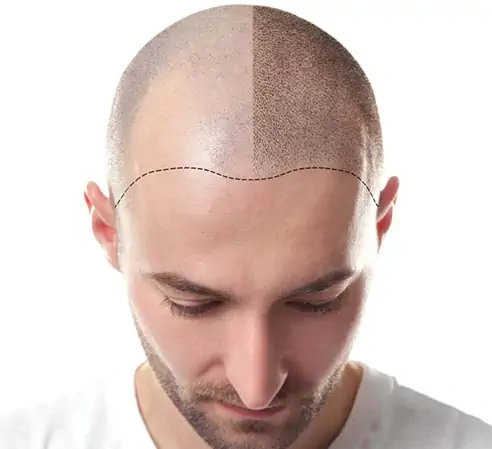
The FUE follicular unit extraction technique is the least invasive of hair transplant techniques. This procedure leaves no linear scar in the donor area, as it does not use a scalpel or stitches. FUE consists of removing follicular units one by one from the donor area using circular micro-punch of the diameter corresponding to the patient's follicular units.
For FUE the hair from the donor area is generally clipped. It is impossible to remove a follicle if the hair is longer than 1mm.
However, “total” mowing can sometimes be avoided depending on the case. We then speak of “Patchy” or “Unshaven” FUE. Normal FUE requires total mowing. Mowing is carried out without a hoof. The ultra short cut is still quickly forgotten because 15 days after the operation, the hair has already grown back 0.5 cm.
The follicles are then selected directly on the patient's scalp, the hair is isolated with a titanium punch with a diameter varying from 0.7 to 1.0 mm. This step is one of the advantages of FUE, we can then select each graft and therefore favor grafts of 1, 2, 3 hairs according to the needs of the recipient area. This is the so-called “Cherry Picking” stage – we select the best grafts!
To isolate the grafts, the punch goes down 3 to 4 mm into the skin along the hair and follicle. This is the only step that requires the punch of FUE. The grafts are then isolated and separated from the epidermis and dermis. But this one remains in the skin for the moment. They are not yet extracted.
The punch isolates the follicles on the scalp.
Using micro-tweezers, either a micro-forcep or a «mosquito» tweezer, the selected follicles are extracted one by one. Each graft is then placed in physiological serum and/or in a mixture of PRP and physiological serum. The grafts are then sorted and checked and prepared for implantation. The extraction procedure is then completed. We can begin the incision and implantation procedure which is the same in FUE or FUT.
The punch isolates the follicles on the scalp
Using blades cut to the size of the follicular units, the practitioner draws the new hair using micro-incisions in the area to be grafted. Slides are cut and prepared for each patient. They are single use. This technique is called «custom-blades».
It is at this stage that factors deciding the result of the hair transplant performed become apparent. These factors are:
The stage of the incisions determines the design of your hair transplant.
Each graft of 1,2 and 3 hairs having previously been separated and sorted, they are now inserted into each incision. This step is often carried out with several hands because up to 3 people can work at the same time and insert the grafts on the patient's scalp.
The grafts will now re-oxygenate and then reconnect to the patient's blood supply.
The FUE operation is finished. Then begins the wait for the graft to regrow. Patients benefit from their results 7 to 8 months later, but at least 12 months are necessary for complete regrowth, and up to 15 to 18 months for hair thickening.
After around ten days, the extraction traces fade and the donor area returns to its normal appearance after 15 to 20 days.
If the patient does not wish to trim the hair, then the procedure must be carried out using so-called «patchy»» or «no-shave» FUE.
It generally takes 15 days for the redness on the recipient area to subside.
Approximately 1 month to 2 months after the FUE operation, all the implanted hair falls out. This is a normal process. 12 months will be necessary for complete regrowth. Treatments can be used to speed up the process (PRP, Minoxidil, Help Hair Shake….)
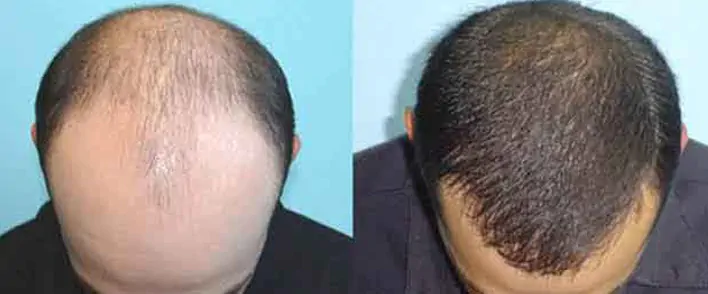
Case 1
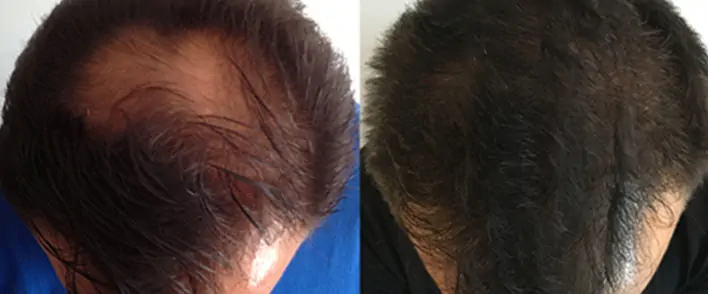
Case 2
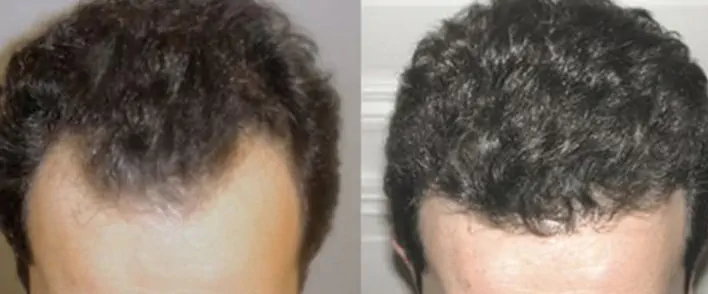
Case 3
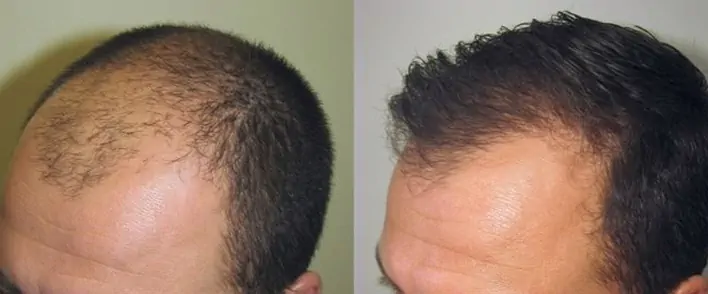
Cas 4
The prices of a hair transplant in Tunisia vary depending on the number of grafts to be taken and implanted at the level of the baldness. Thus, after an initial consultation with the surgeon, you will receive a detailed quote.
| Procedures | Prices |
|---|---|
| Up to 2000 grafts | From 2500€ |
| Each additional 500 grafts | From 350€ |
| Stay 3 nights / 4 days |
The quote you receive will be all-inclusive, there will be no hidden costs other than your personal expenses...
 +216 52 74 04 37
+216 52 74 04 37